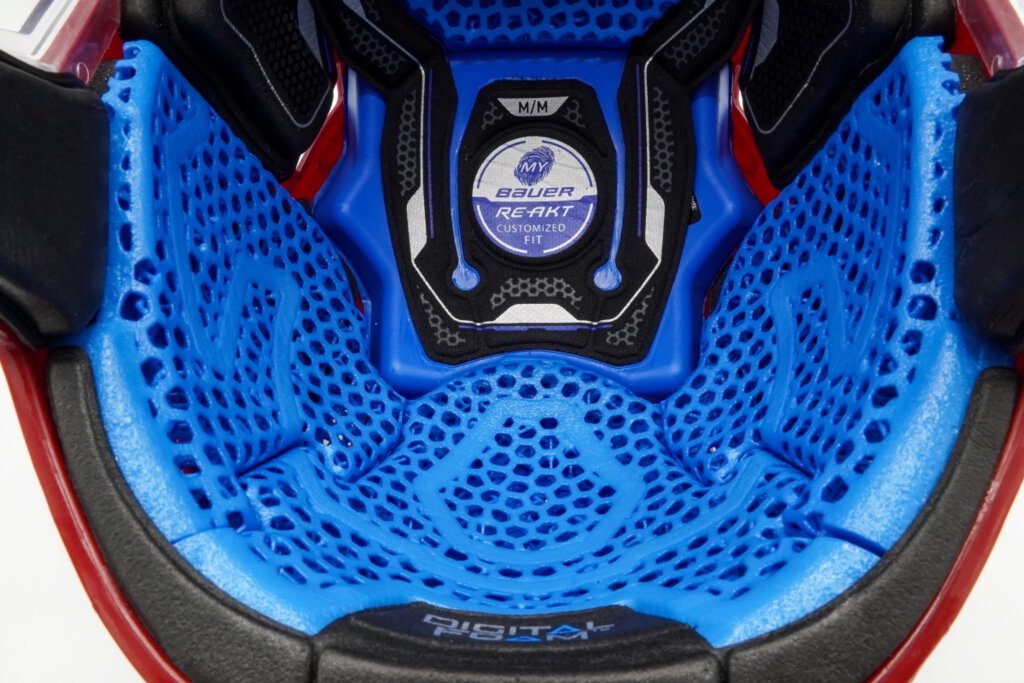EOS launches Digital Foam Architects Network
New alliance aims to accelerate the development and 3D printing of consumer, medical, and industrial products featuring Digital Foam applications.

Digital foam allows manufacturers to dial in performance and features for a range of products, including Bauer’s ReAKT helmet. Image Courtesy of EOS North America
Latest News
October 23, 2023
EOS North America has been in the forefront of bringing Digital Foam to 3D printing applications. Now the company has taken that effort a step further with its new Digital Foam Architects Network, an alliance designed to accelerate the development of additively-manufactured Digital Foam applications.
Digital Foam applications typically have complex requirements that depend on the expertise of multiple disciplines coming together in order to ensure success. EOS’ latest partnership, with Arkema, General Lattice, and DyeMansion, aims to fill that gap by formalizing a standing alliance of AM experts with in-depth knowledge of design software, materials, and the various 3D printing, post-processing, and colorization hardware elements to guide Digital Foam applications from an idea through production.
Digital Foam for AM applications requires collaboration across a breadth of disciplines because Digital Foam is not a product or material category, but rather an approach to 3D printing foam-like products. “The Digital Foam Architects Network is another chapter in the maturation of this approach by coalescing the required AM expertise,” notes Jon Walker, Digital Foam spokesperson for EOS, adding that the announcement is the first round of commitments to be part of its experts network.
With the ability to “dial in” the exact performance and features of a product, Digital Foam can be used to create product differentiation or to design mass customized product offerings. “Digital Foam applications can be designed and produced with tailored features for performance, protection, and lightweighting,” Walker explained.
EOS holds a patent in support of AM-generated Digital Foam. The patent is specific to any generatively 3D printed object, which has a flexible grid-like structure or matrix such as lattice where open cells are joined together in groups of differing characteristics. The EOS program combines product design (CAD functionality), materials, parts qualification processes, and AM to bring new ideas to market that are produced in Digital Foam.
Digital Foam can be used to create entirely new product offerings that have unique requirements for comfort, performance, and protection such as athletic shoes, orthotics, and protective gear. Bauer’s ReAKT helmet offering is one such example, featuring a 3D printed liner output by EOS printers. As part of the collaboration with Bauer, EOS provided CAD, materials, part qualification and 3D printing allowing the company to create highly custom helmet inserts while enabling production of custom products at scale.
General Lattice develops digital materials solutions; Arkema is a diversified chemical manufacturer of high-performance materials; and DyeMansion provides post-processing solutions for industrial polymer 3D printing.
For a look at EOS Digital Foam capabilities, check out this video.
Subscribe to our FREE magazine, FREE email newsletters or both!
Latest News
About the Author
Beth Stackpole is a contributing editor to Digital Engineering. Send e-mail about this article to [email protected].
Follow DE





